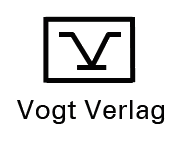Details
| Autor: | Xiao Fang |
| Titel: | Investigation of Biomedical Antennas and Path Loss Models for Leadless Cardiac Pacemaker and Wireless Capsule Endoscopy |
| Typ: | Dissertation |
| Fachgebiet: | Elektrotechnik |
| Auflage: | 1 |
| Sprache: | Englisch |
| Erscheinungsdatum: | 25.02.2024 |
| Lieferstatus: | lieferbar |
| Umfang: | 250 Seiten |
| Bindung: | Soft |
| Preis: | 79,00 EUR |
| ISBN: | 9783959470704 |
| Umschlag: | (vorn) |
| Inhaltsverzeichnis: | (pdf) |
Abstrakt in Englisch
The development of wireless technologies for implantable devices can contribute to improvements in the quality and efficacy of healthcare. Leadless Cardiac Pacemaker (LCP) and Wireless Capsule Endoscopy (WCE) are two state-of-the-art implantable devices that have a high potential to enable medical professionals to gather timely clinical information, increase the survival rates of the patients, relieve the pain caused by surgery, and provide other benefits. Designers of a wireless communication system for the LCP and WCE face many crucial challenges, such as the operating frequency band selection, wave propagation inside the human body, path loss models, high-efficiency and miniaturized implantable antennas, the influence of human tissues on the implantable antenna, and high gain on-body antennas.
The focus of this research was the development of stable, low-power-consumption, high-efficiency transmission links for the communication systems of LCP and WCE by building path loss models and designing novel in-body and on-body antennas. Path loss models based on practical application scenarios of LCP and WCE were built in this dissertation, and miniaturized, and highly radiation-efficient implantable antennas with new design concepts were proposed. In comparison to existing path loss models and antennas, the built path loss models excluded the effects of antenna types in all potential narrow frequency bands, whereas a comprehensive equation is proposed to simplify the process of building path loss models in the 2.4 GHz Industrial, Scientific, and Medical (ISM) band. Several new design concepts are proposed for designing the extremely miniaturized antennas working inside the lossy medium. The radiation efficiencies of the proposed antennas were verified by the numerical simulation and in-vitro and in-vivo measurements, and were much higher than the state-of-the-art implantable antennas. Meanwhile, the wave impedance, radiation performance, and near-field boundary of the antenna inside the lossy medium are systematically investigated.
In general, the path loss models were expected to be used to evaluate and improve the transmission links in all the communication scenarios. Experimental measurements and full-wave numerical simulations were used to build the path loss models for LCP applications, and simplified Cole-Cole models for calculating the relative permittivities and conductivities of human tissues in different frequency bands were proposed to reduce the complexity of the calculation in full-wave simulations. In-body to on-body path loss models in the Ultra-Wideband (UWB) were also built, to achieve high data rate transmission for the WCE application, and the influences of omni-directional and directional on-body antennas on the path loss models were studied.
Highly radiation-efficient implantable antennas are key components of the communication system of LCP, which pro- vides reliable and high-efficiency transmission links. Besides the fact that the miniaturized size of the proposed antennas saves space for the battery in the limited cavity of the pacemaker capsule, it can also extend the lifetime of the pacemaker capsule and avoid the risk of surgery for the patients. In this dissertation, we proposed several new de sign concepts and verified the radiation performance of our proposed antenna with the simulated and measured transmission coefficient in homogeneous tissue, an anatomical human model, and a living animal. For the theoretical study, the wave impedance, radiation performance, and boundary between the near-field and far-field of antennas inside the lossy medium are systematically investigated, through which new criterion defining the near-field and far-field boundary and a modified Friis equation for antennas inside the lossy medium were proposed. For improving the in-body to on-body transmission data rates of WCE applications, compact antipodal Vivaldi antennas working on the UWB were proposed. Without enlarging the size of the antenna, the operating bandwidth was enlarged and the realized gains were improved. To further increase the gain of the on-body antennas, based on the proposed antipodal Vivaldi antenna, two antenna arrays were designed with vertical and horizontal polarization, re spectively.


